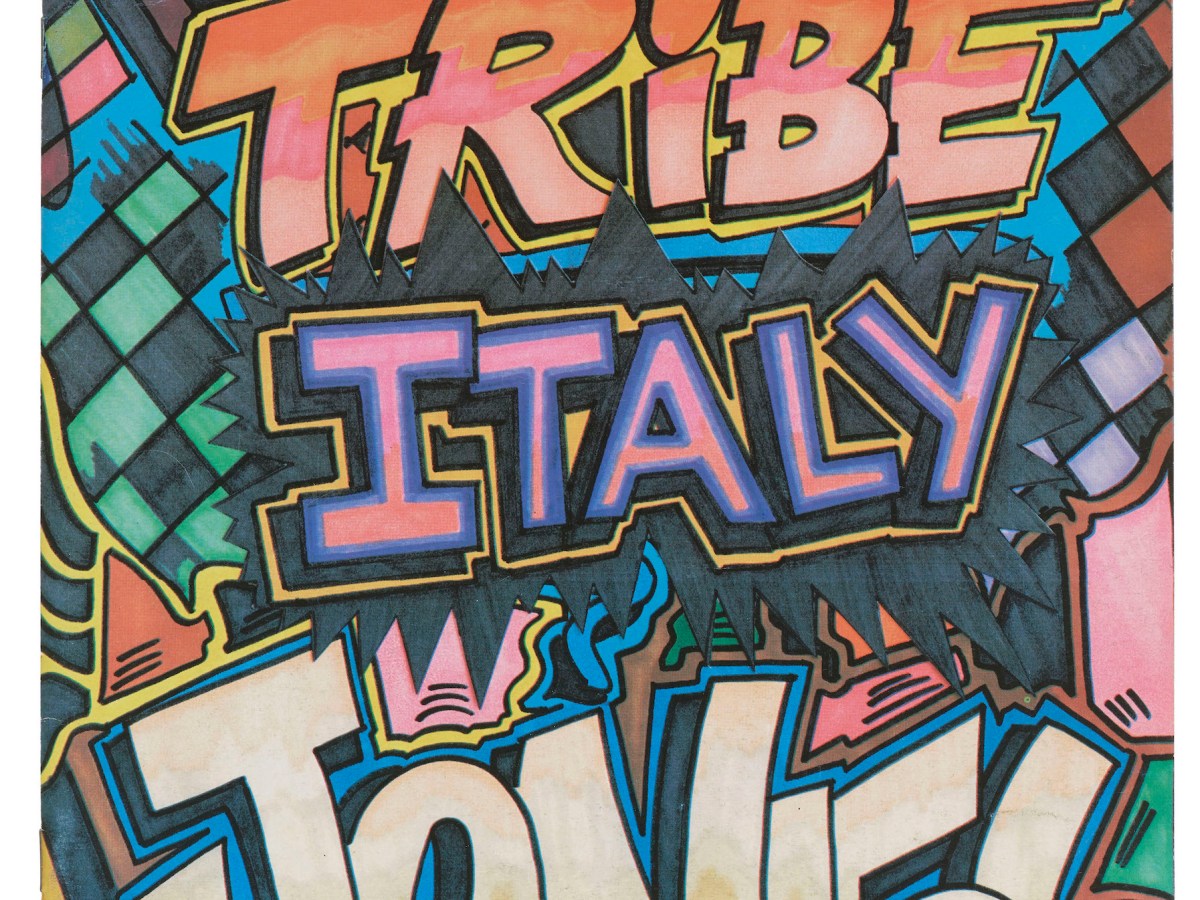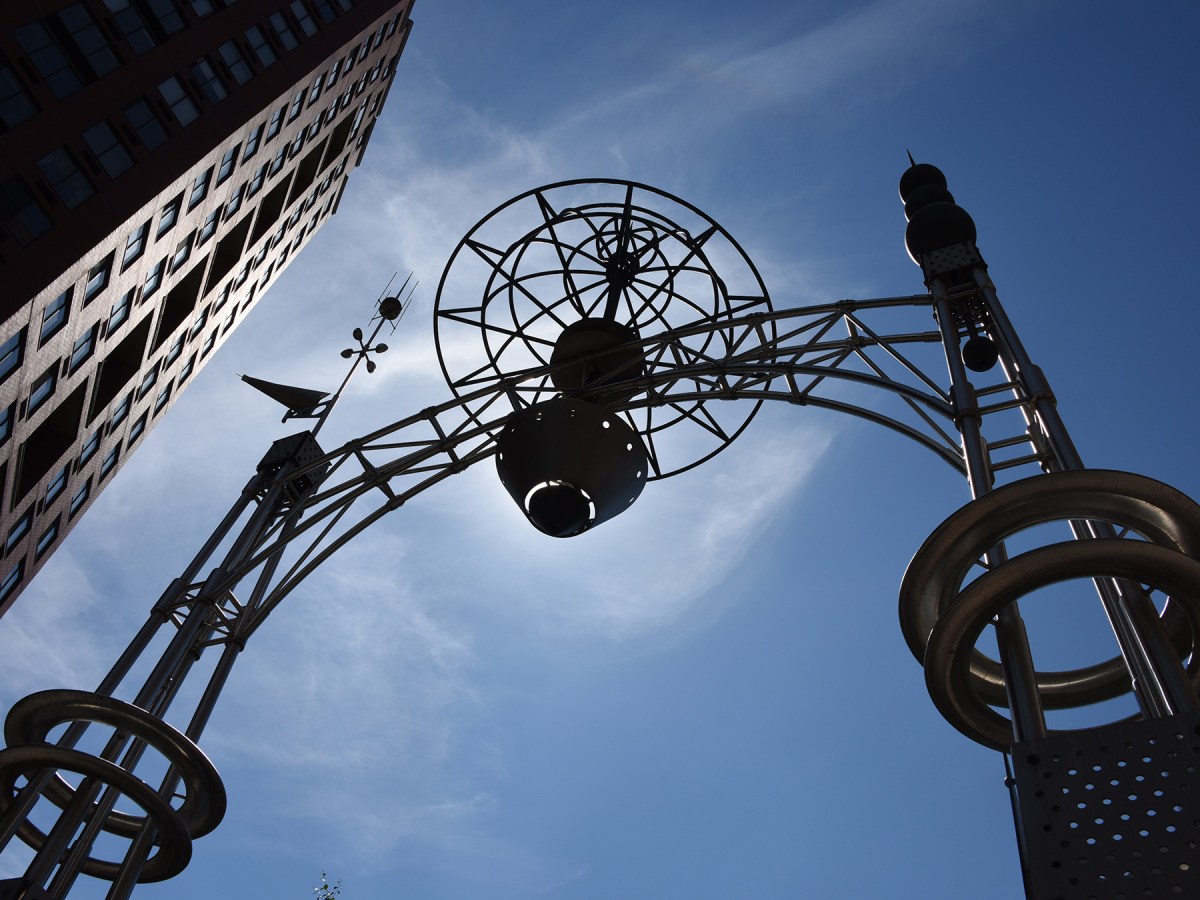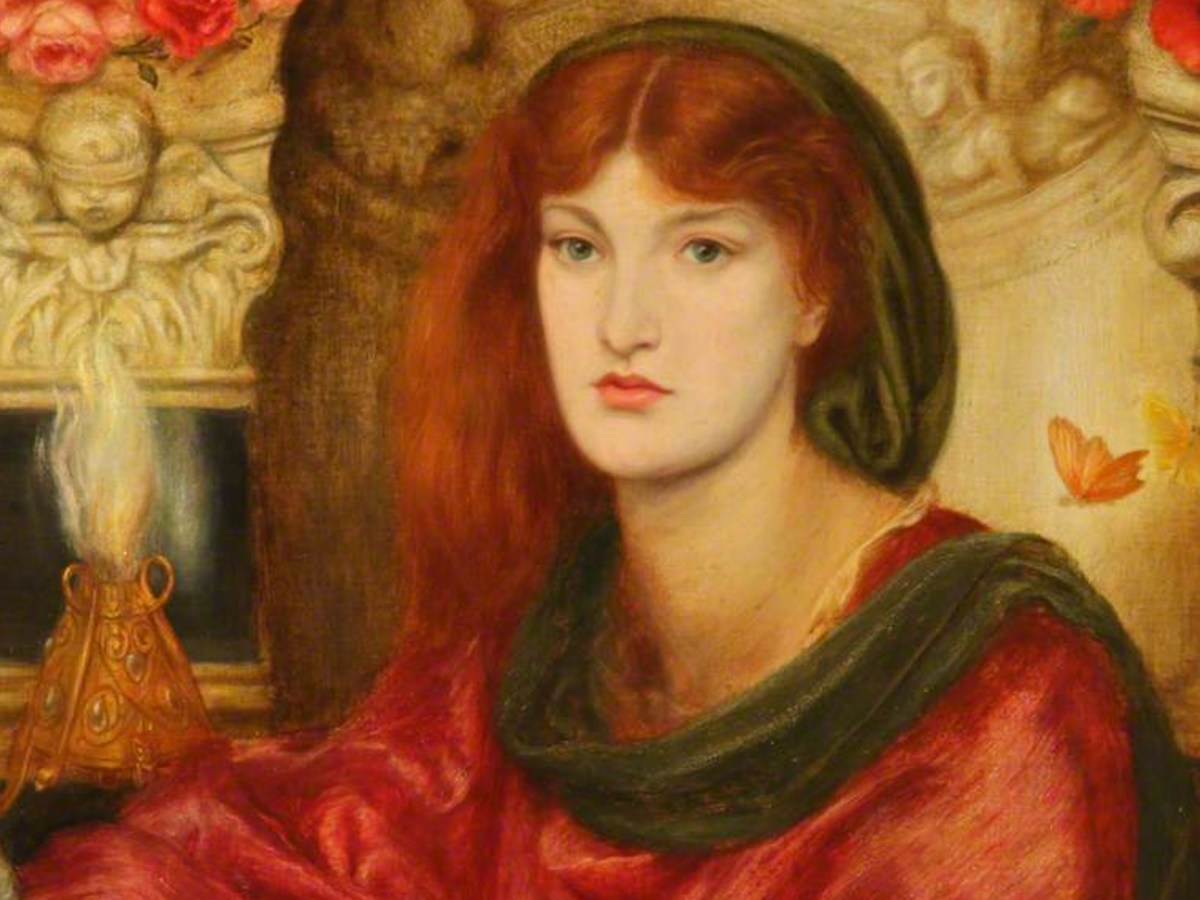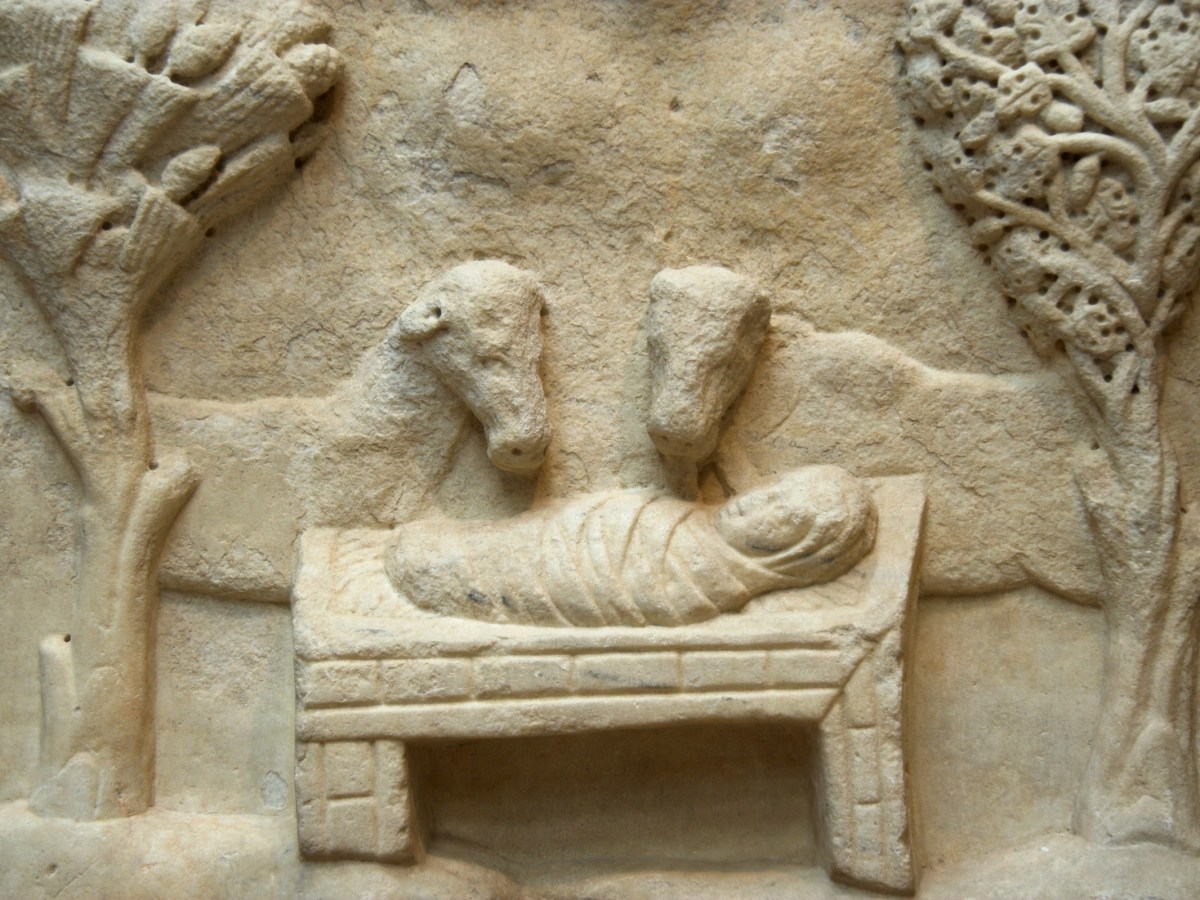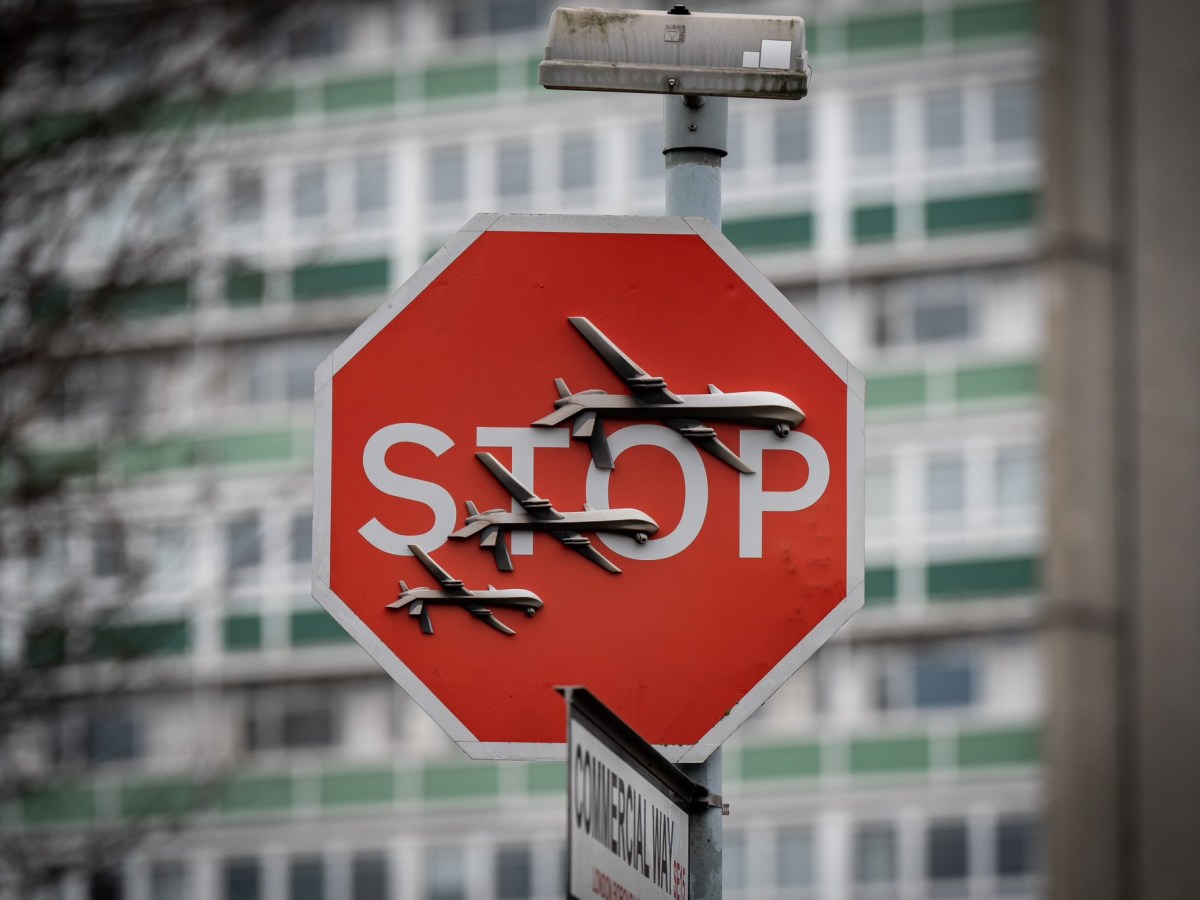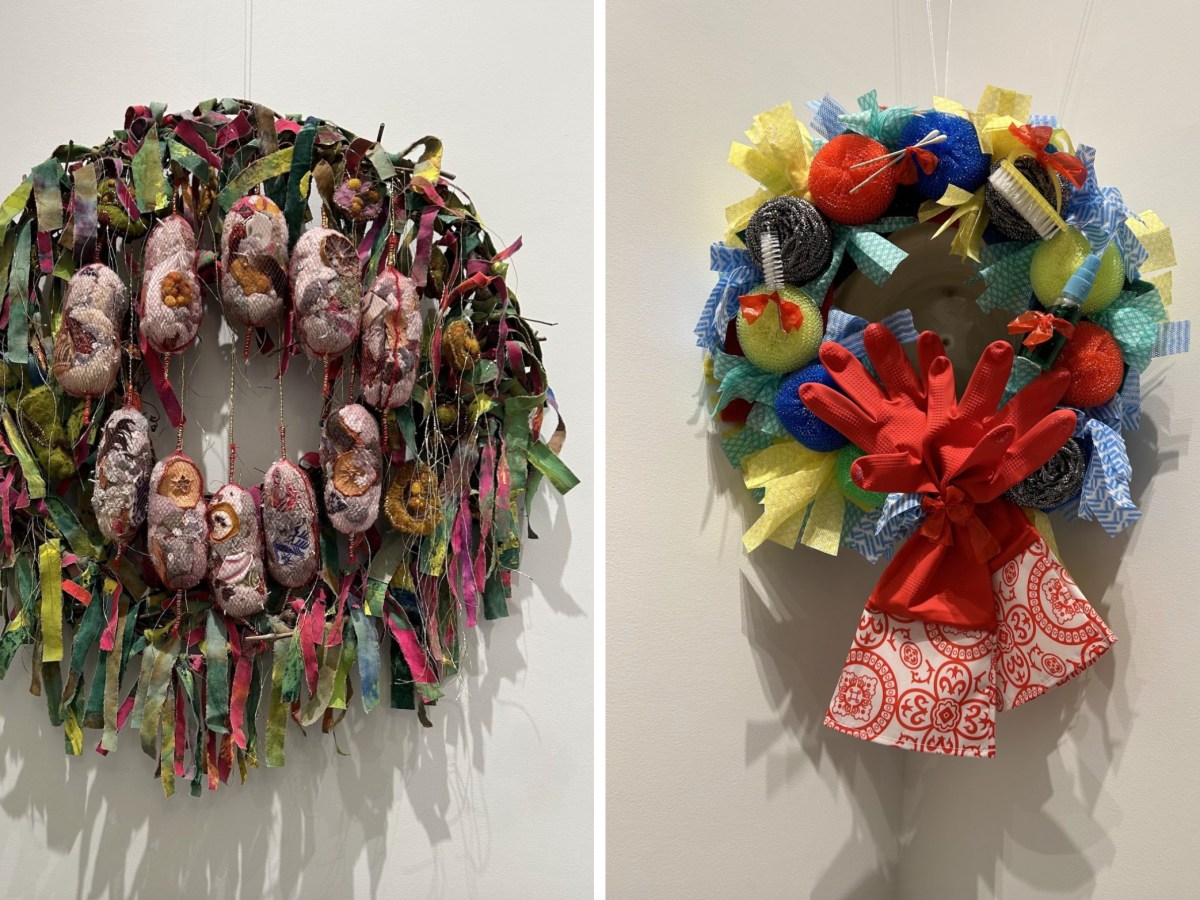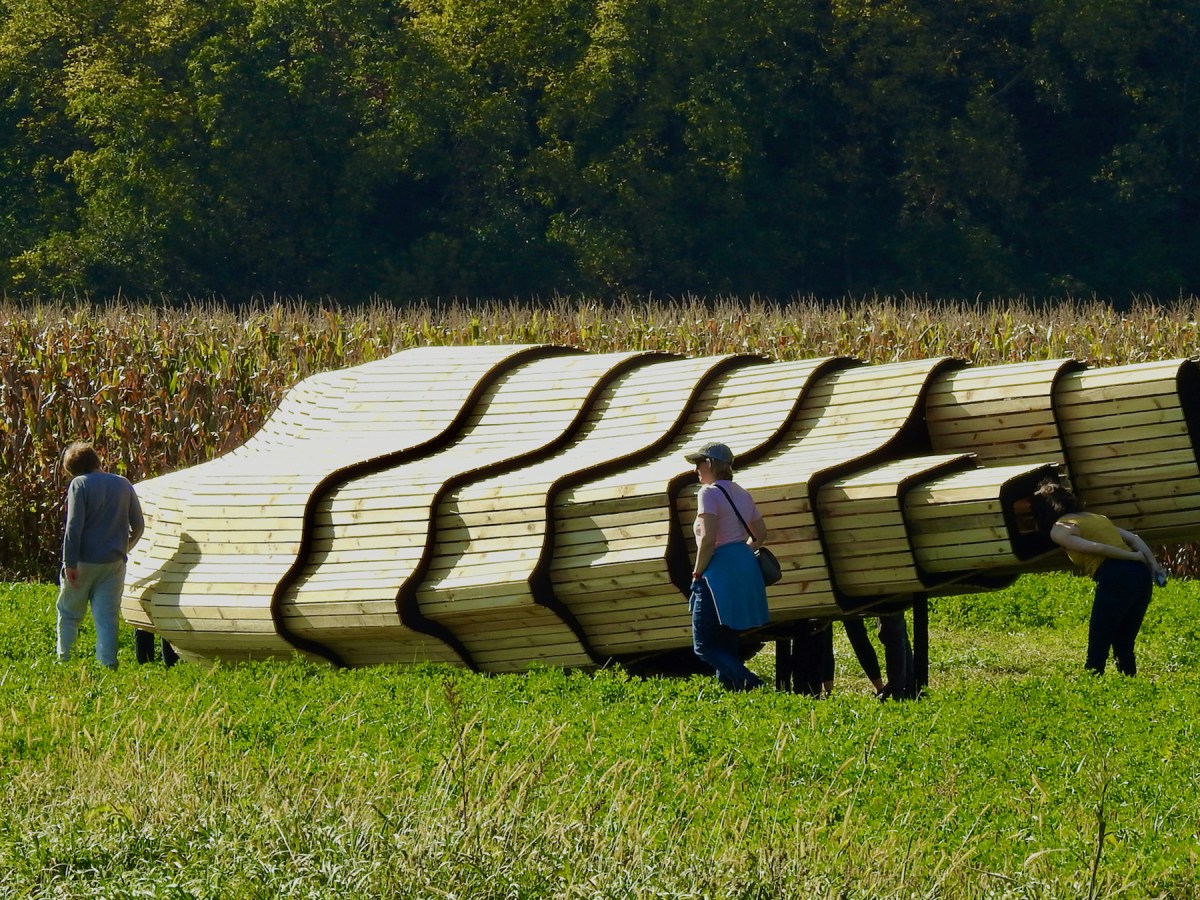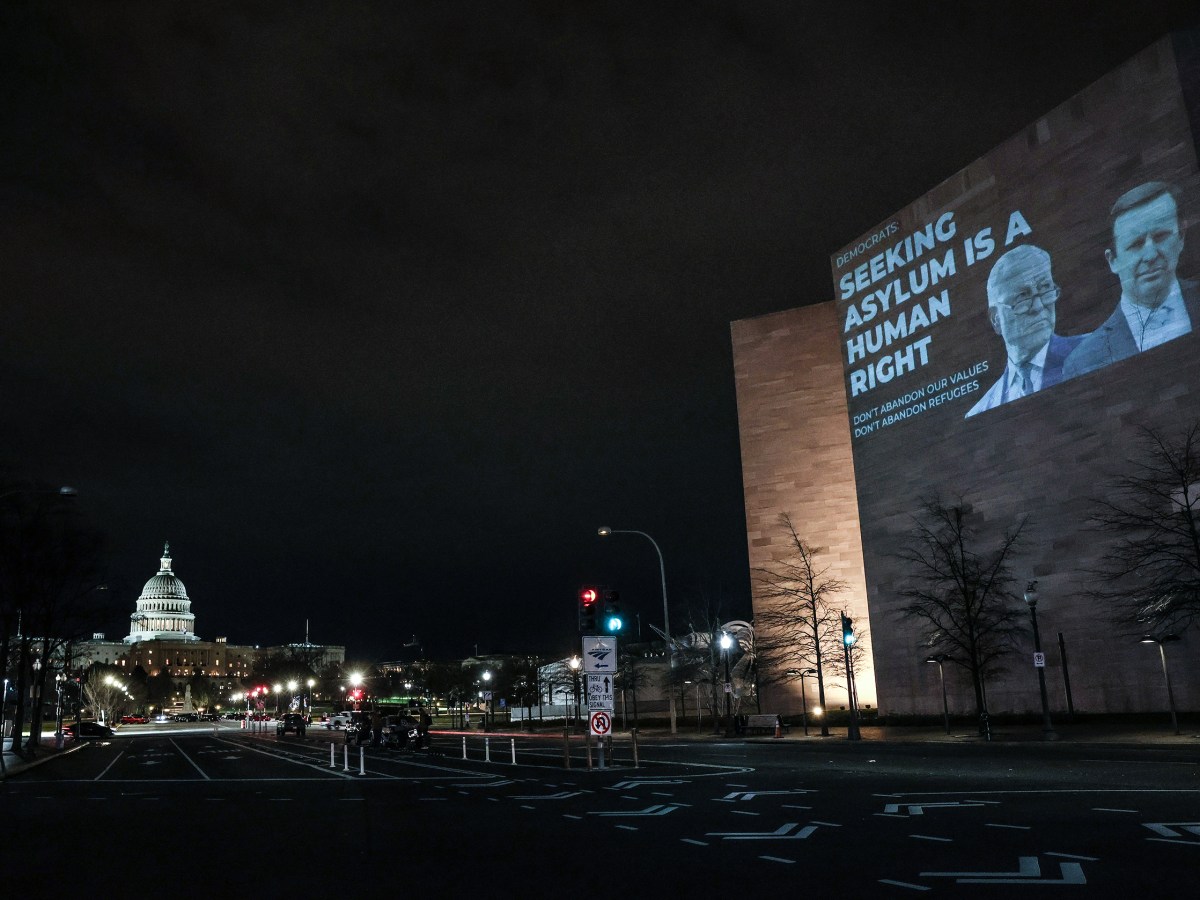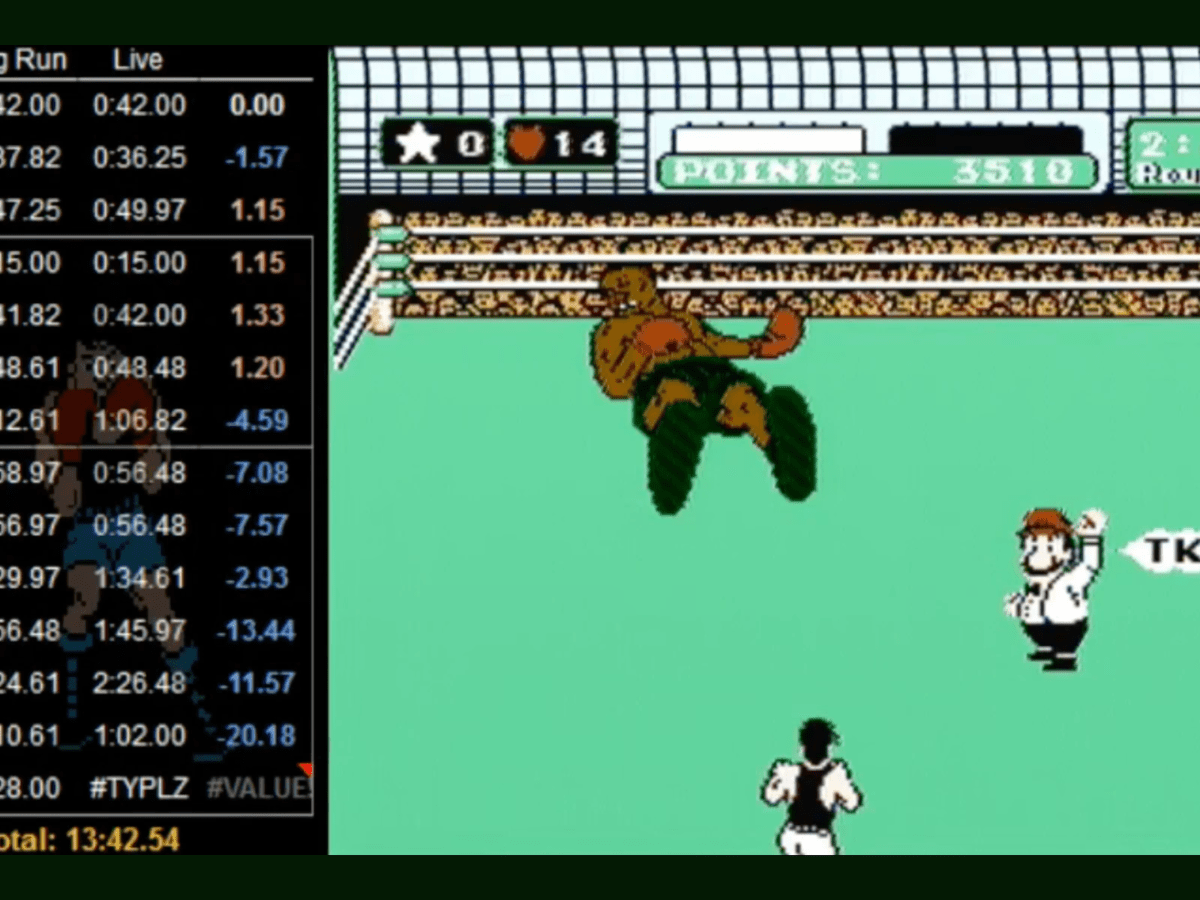Taking the concept of a “green thumb” several steps further, artist Ellie Irons approaches plants as a literal source of color: She creates her watery paintings with pigments tinted by organic hues found in the natural world. These works often refract scientific documentation — whose history is charged with colonialism — to record, honor, and reorient our relationship to the vegetation around us, specifically in current-day New York State’s Hudson area. I picked Irons’s brain about the process of creating her own paints through harvesting on the occasion of her recent book, Feral Hues: A guide to painting with weeds (Publication Studio Hudson). In an era of increasing ecological crisis, Iron’s practice is a call to return to grounded relationships with the environment, encouraging us to recognize the innate importance of living organisms that we might otherwise regard as mere “weeds.” This interview has been lightly edited for clarity.
Hyperallergic: What is the most joyful part of making your own pigments?
Ellie Irons: There are many joys, which is why I’ve been entranced by the process for so many years: an ever-deepening and shifting connection to urban ecosystems and the land that supports them that emerges through careful, considered harvesting practices; the smells, colors, and textures that reveal themselves when plant parts are processed by hand in the studio; the joy of sharing the process with other humans who also become entranced by the relatively simple act of lovingly harvesting often overlooked weedy plants and creating paint with them; the process of attuning to the cycles of vegetal life sprouting, growing, blossoming, fruiting, senescing across the seasons and years — there is always something to delight in and harvest, in any habitat, even in deep winter, which I find comforting and reassuring in this age of climate chaos and instability.
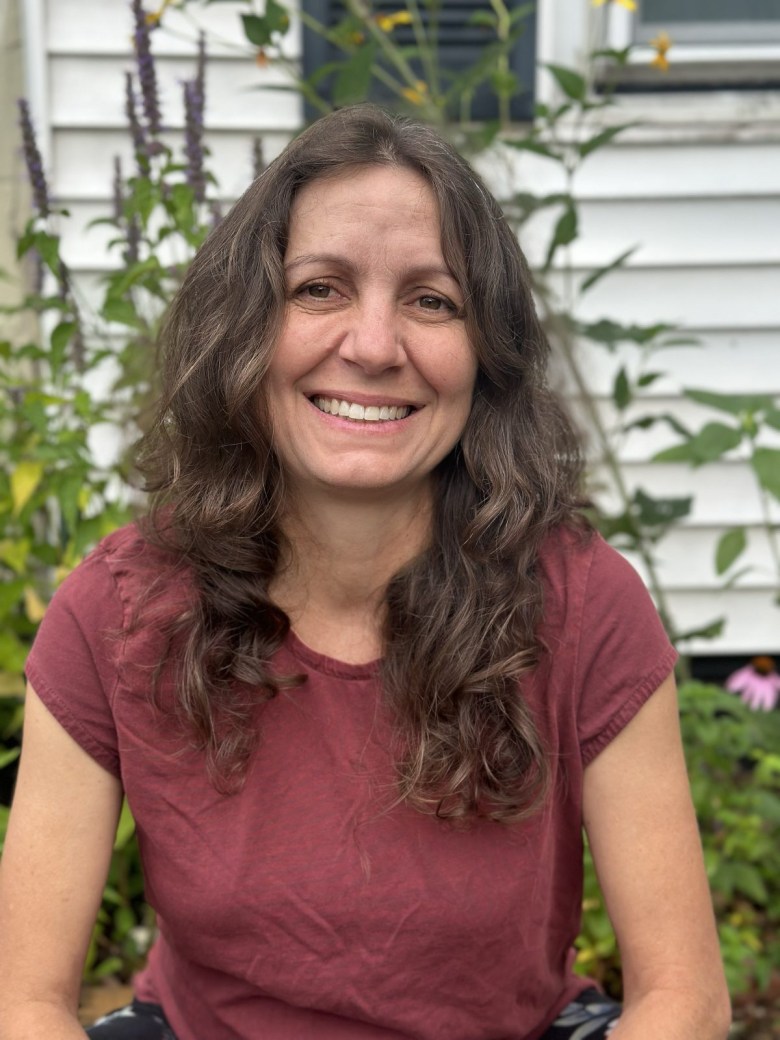
H: How has your practice evolved over the past several years?
EI: I would say recently, since maybe 2019, my work has become more locally rooted and grounded. In the decade before that, I found myself investigating plants across urban habitats in a global sense — comparing pokeweed and honeysuckle growing in a parking lot in Taipei with the same species sprouting from a concrete river in current-day Los Angeles, for example. I’m still fascinated by those global connections, and find them resonant and relevant, but in recent years my focus and my daily practice have shifted to be more bioregional — I take the Mahicanituck/Hudson River Watershed as a salient range in which to work, connecting with human and plant populations up and down the river from New York City to the Adirondacks, in range of urban, postindustrial, and rural nodes. This shifting focus is based on a range of factors, from my increasing discomfort with energy-intensive travel to my new(ish) status as a mother to my day job with a community science and art organization that focuses on hyper-local environmental justice issues, to of course, the ongoing impacts of the pandemic. There are other ways it has changed of course — writing has become increasingly important to me, as has enduring land-based work (a result of living in a shrinking upstate city where access to soil and open earth is simpler than in New York City, where I started working with plants more than a decade ago).
H: What are your favorite plants to work and be in relation with, and why?
EI: Perhaps unsurprisingly, I have many favorites, and feel fortunate regularly meet plants who are new to me — my loves change by the season, and across contexts. Right now, in early August, each morning I’m greeted by innumerable, intensely blue Asiatic dayflower (aka 露草, dew herb, Commelina communis) blossoms lining the border of my neighbors’ chainlink fence where it meets the sidewalk. The blossoms only last until noon or so, depending on the weather and the intensity of the sun. I take 20 to 30 blossoms most mornings, and store them in a small cup in the freezer, accumulating them until I’m ready to process them into a range of shades of blue. I love dayflowers for the way they become unmissable once they catch your eye, and draw you in. They have an unassuming stature, foliage that’s easy to overlook, but when they burst into flower for several hours each morning, the proliferation of electric blue petals — almost sparkling if you look closely — can feel like tiny jewels sprinkled along the sidewalk. Asiatic dayflower also has a fascinating naturalcultural history and evolving relationship with humans. They evolved in current-day Japan and Eastern Asia, where they were cultivated for pigment production for textile dying and woodblock printing — from this early relationship with humans, they’ve continued to demonstrate a wide-ranging ability to adapt to human landscape transformations and processes. Having migrated to the American continent, they live well in cities, where they are sometimes appreciated as a “wildflower,” and are gaining notoriety as a super weed in round-up ready soybean fields, where they’ve demonstrated resistance to the herbicide glyphosate. And in their native China they are being studied as a hyperaccumulator due to their ability to thrive on the polluted soils of old copper mines, absorbing large amounts of heavy metals.
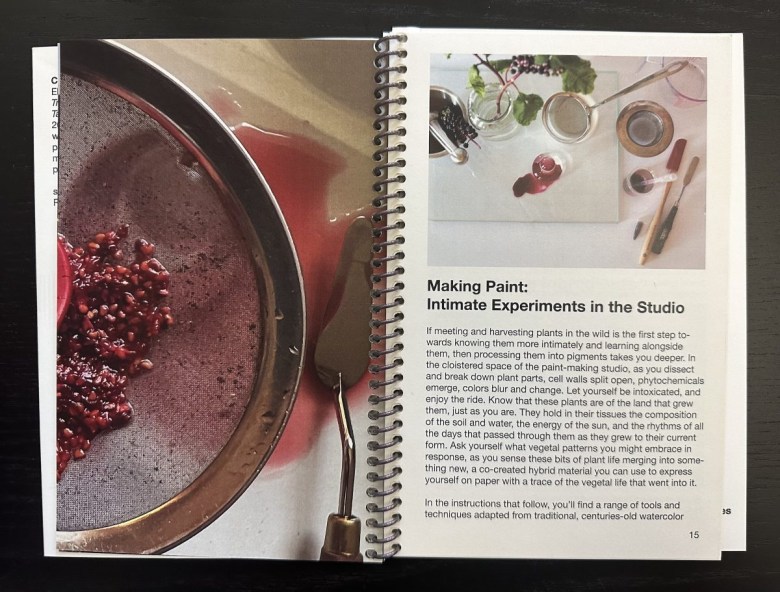
H: What first prompted you to turn to the natural world as a material?
EI: I’ve always worked with themes of ecology, interconnection, and the burdens that certain resource-intensive, extractive human lifestyles place on the planet and her living systems. I turned to working with living materials harvested from the urban landscape after I moved from Los Angeles to New York City in the mid-2000s, and found myself feeling buried in the so-called “concrete jungle.” I was a more conventional painter at that time, working large-scale with acrylic and watercolor paint, and I found myself painting an increasingly claustrophobic series of dark caves inhabited by surreal, almost alien flora and fauna. It felt like a dead end, and connecting with weedy life — the literal plants emerging from the sidewalk cracks outside my Hell’s Kitchen studio — was a revelation, and I think saved me as a painter. It gave me a way to connect the fieldwork side of ecology — which I’ve always loved — with my studio practice, and the object-making aspect of my work with seasonal shifts and rhythms. As I started developing the practice, other folks started asking how it was done, and soon enough my relatively solo studio-based practice had become a socially engaged, walk- and workshop-based practice that was deeply connected to land and place, which gave me a whole new set of concerns and interest to interrogate as I learned about the complex histories and fraught presents of many of the weedy species that thrive in urban spaces, and the humans they are in relation to.
H: How have histories of colonization and Indigenous stewardship in current-day New York influenced the way you approach creating pigments?
EI: In so many ways! Both Indigenous land stewardship and colonization have impacted the land and the plants I interact with daily in myriad inescapable ways. I’m writing these words from Mohican land, land currently known as Troy, New York. This is a post-industrial town full of weedy plant life, perched on the massive, magnificent, and deeply polluted Mahicahnituck, aka the Hudson River. Given my interest in learning from and with plants, I return again and again to contemplating and learning from the ways that the Indigenous peoples of the region I call home — the Mohican and Haudenosaunee peoples, and all the displaced Indigenous peoples from other parts of the world who find themselves here — understand plants as active agents in the world, as relatives, and in some cases as teachers. As a settler on this land, an orientation towards plant agency and wisdom is something I’m attuning to as an adult. The ravages of colonization disrupted and forever altered the naturalcultural relationships that shaped the plant life that surrounds us today. The plant communities in current-day New York are cosmopolitan, made up of plants who have moved with moving human populations, and others who evolved here and continue to be shaped by evolving land stewardship practices, Indigenous and otherwise. In a practical sense, gratitude practices — the act of pausing, reflecting, and saying thanks, of seeking reciprocity — have been deeply influential for me, and I’ve learned them from a range of Indigenous cultures, from Stockbridge-Munsee Mohican herbalist Misty Cook to the writing of Mary Siisip Geniusz, who shares Anishinaabe plant teachings in Plants Have So Much to Give Us, All We Have to Do Is Ask, to the well-known work of Potawatomi writer and scientist Robin Wall Kimmerer.
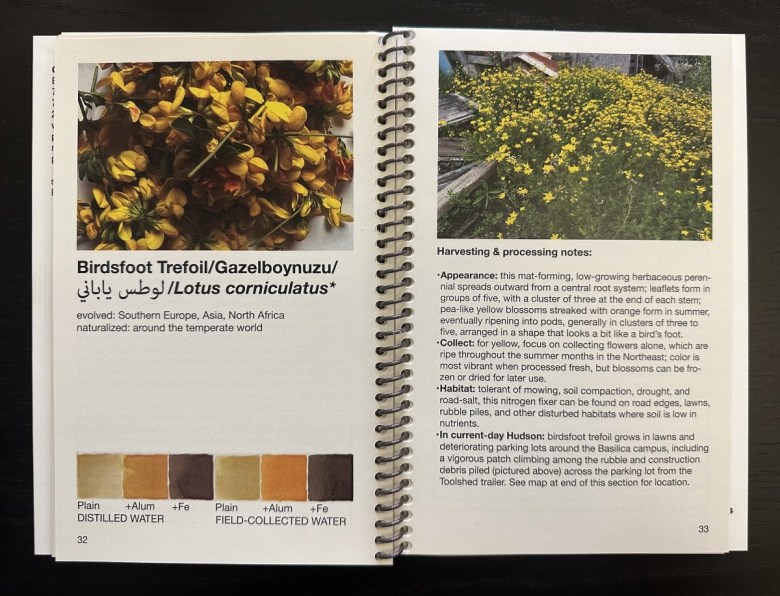
H: What is the most difficult color to reproduce in nature?
EI: When I started this project I thought it was blue! But coming into contact with Asiatic dayflower changed my mind. I’ve got plenty of blue in my palette. Green is everywhere, of course, in plant life, but I’ve learned that chlorophyll is notoriously unstable, so keeping green really green is challenging — contact with ultraviolet radiation (sunshine!) breaks it down quickly. I kind of like that intransigence, though. The green vegetal world is pushing back against my attempts to harness it long-term, and I respect that!
H: Have you noticed any renewed interest in the work you do, and why do you think people are particularly drawn to your practice right now?
EI: This project — working with feral, so-called “invasive,” weedy plants — has had many ebbs and flows. When I first started it more than a decade ago, it served to catalyze a connection to a small community of like-minded folks also working with urban ecosystems and weedy plant life, leading to ongoing collaborations like the Next Epoch Seed Library and the Environmental Performance Agency, whose members and activities have influenced me and the evolution of my work deeply. Now, with the so-called “plant turn” well underway in academia and art, and the pandemic-era resurgence in DIY/DIT (“Do it Together”) approaches, my guide to making paints from weedy plants seems to have struck a nerve. I think folks from many walks of life are hungry to dispel what Robin Wall Kimmerer has adeptly described as “species loneliness.” Not only are we lonely in front of our screens in our isolated interior spaces longing for human connection, but many of us humans mired in societies premised on the global-elite extraction and consumption cycle are lonely for authentic, deep, more-than-human relationships. Making paint from a weedy plant growing from your sidewalk crack, however small a gesture, is one way to bridge that gap. Doing it in the company of other humans who also want to renew and strengthen multispecies community takes it a step further, at least for me and those I’ve worked with over the years, beginning to satisfy a deep need.
H: On a related note, how do you see your work in conversation with the current ecological crisis?
EI: To take it a step further, the broken, extractive, resource-driven relationship between some societies and the rest of the living world has driven us collectively to and beyond a crisis point. We’re already living beyond the apocalypse in some sense — this is another lesson I take from Indigenous collaborators and their allies working on land rematriation and renewing connections to the living world. The advent of colonization — the genocide, enslavement, privatization of land, industrialization — were world-changing events experienced as an extreme social-ecological crisis on this continent, and we’re all living in their ongoing aftermath. The current climate crisis is part of a continuum, and the plant life we live with now on this continent is shaped by those irreversible events. There is no “before” to return to at this point, which is why I’m interested in getting to know and care for the ecosystem as it is today, embracing it as a starting point for finding joy in what continues to thrive, and building coalitions of plants, people, and land who can continue to evolve together in a way that centers humans as an integral part of the living world, in partnership rather than control or ownership. This feels essential for navigating our ongoing crisis. Knowing weedy plants on an intimate level is one way for me to stay grounded in this purpose, stay hopeful, and nourish those bonds to the land in habitats heavily impacted by the forces that have brought us into this period of crisis.

H: Which artists — visual, literary, musical, or otherwise — do you draw inspiration from?
EI: Again, so many! From feminist performance art to bio-art, I’m inspired by cross-disciplinary approaches to the arts that integrate social-ecological concerns. Art historian Lucy Lippard has traced long legacies of land-based arts that inspire me, from ancient petroglyphs to Ana Mendieta’s Silueta series. In a contemporary sense, socially engaged work attuned to plants and land continues to excite me. I’ve written about and drawn nourishment from Lucia Monge’s Plantón Móvil, Mary Mattingly’s “Swale,” Jan Mun’s “The Fairy Rings,” Margaretha Haughwout’s Food Forest Futures, and so many others. I’m also increasingly aware of how many other artists are out there doing amazing work with plant-based pigments and dyes, and integrating them into critical, activist, and community-based projects. Hannah Chalew, Katerie Gladdys, and Lisa Myers come to mind, for example.
H: What do you hope anyone interested in approaching plants as material sources for art will first consider and reflect upon?
EI: I hope people will keep in mind processes of gratitude and respect — of mutual exchange, rather than of taking to satisfy a material need. This can look many ways. Maybe even just asking yourself a few questions before harvesting: Who else might be in relation with this plant, human or more-than-human? What is the plant doing here and why? How long has this plant been here, will they be here tomorrow, or in 100 years? While I understand the stance of taking as much as possible of a plant considered invasive in some contexts (in order to control the spread or reduce the population), that is not the orientation of this project or my work. I’m more interested in getting to know the plants I work with, and attempting to understand their naturalcultural status, and then considering what we might call a “harm reduction approach” that has a plan for healing. Rip a weedy plant out, you’ll leave a wound, and more will emerge in their place unless you’ve got a careful and considered (and often labor-intensive!) healing plan in place that will nurture the plant community you hope to see — while hopefully nurturing you as well!
Feral Hues: A guide to painting with weeds by Ellie Irons (2023) is published by Publication Studio Hudson and is available online.


